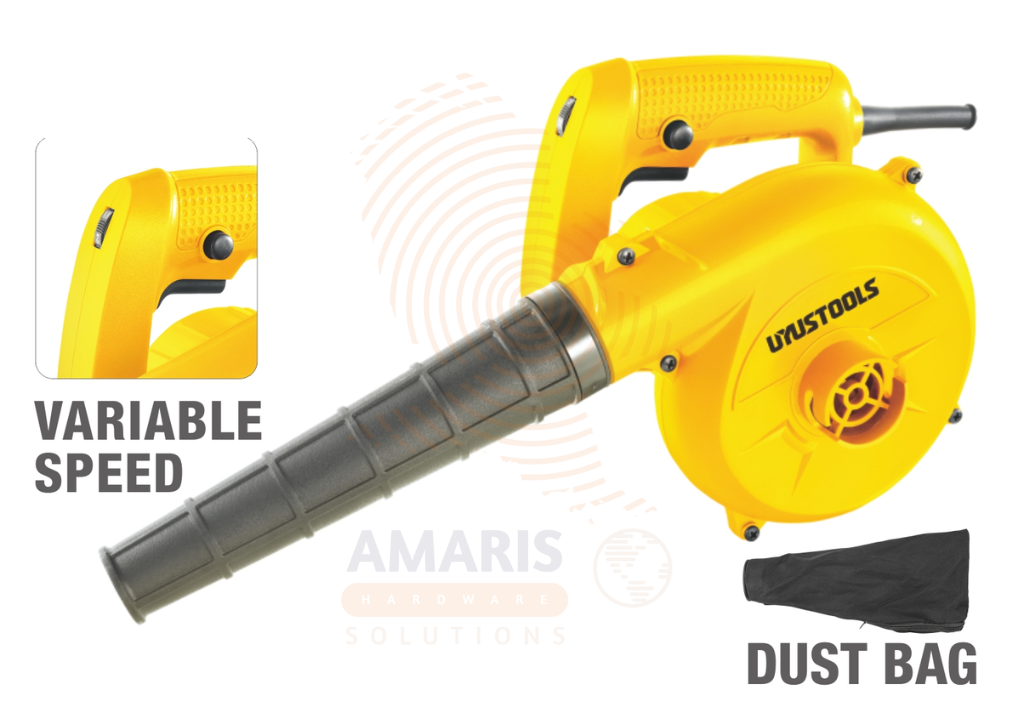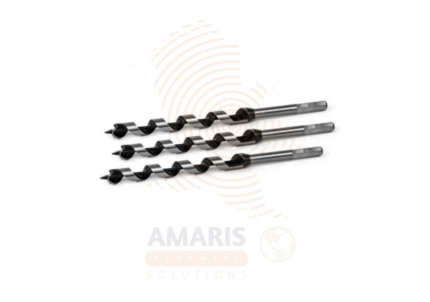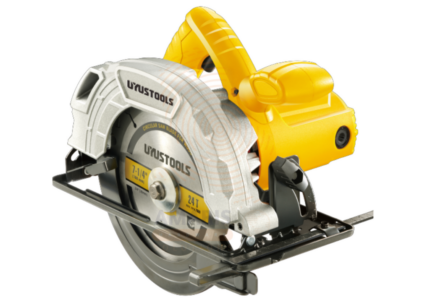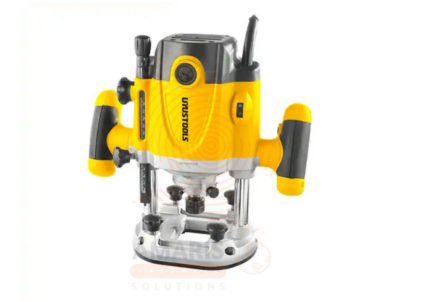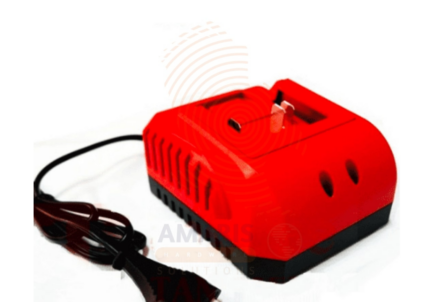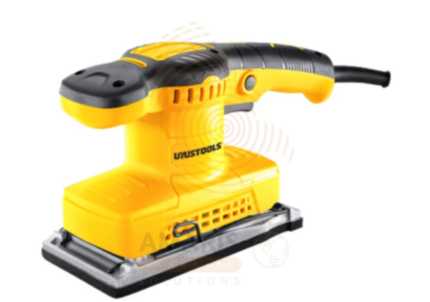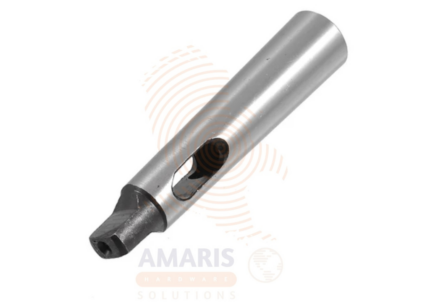
Arbor
$17.31 Original price was: $17.31.$16.44Current price is: $16.44.
Aspirator Blower – Variable speed
$28.42 Original price was: $28.42.$27.00Current price is: $27.00.
WhatsApp Order
An Aspirator Blower – Variable speed refers to a device designed to generate airflow by creating a low-pressure area through the Venturi effect, utilizing a variable-speed motor to control the intensity of the airflow. This equipment is commonly used in various applications, such as laboratories, industrial settings, or HVAC systems, where adjustable air circulation or suction is required. The variable speed feature allows users to regulate the blower’s output, providing flexibility and adaptability to different operational requirements.
Description
Table of Contents
ToggleAspirator Blower – Variable speed
Uses
-
Laboratories:
-
Fume Extraction: Variable-speed aspirator blowers are employed in laboratories to remove fumes and airborne contaminants generated during experiments or chemical processes.
-
-
Industrial Ventilation:
-
Dust and Particle Control: In industrial settings, these blowers are used to control and extract dust, particles, and other airborne pollutants to maintain a clean and safe working environment.
-
-
HVAC Systems:
-
Air Circulation: Variable-speed aspirator blowers are utilized in heating, ventilation, and air conditioning (HVAC) systems to regulate air circulation, ensuring efficient temperature control and air quality.
-
-
Chemical Processing:
-
Chemical Fume Removal: Industries involved in chemical processing use variable-speed aspirator blowers to eliminate potentially hazardous fumes and vapors from the work environment.
-
-
Medical and Research Facilities:
-
Ventilation in Clean Rooms: Clean rooms in medical and research facilities may utilize these blowers for maintaining controlled environments, ensuring the absence of contaminants.
-
-
Welding and Metal Fabrication:
-
Fume Extraction in Welding: Variable-speed aspirator blowers help in extracting welding fumes, protecting workers from inhaling harmful substances in metal fabrication and welding processes.
-
-
Electronic Manufacturing:
-
Soldering Fume Removal: In electronics manufacturing, these blowers are used to remove soldering fumes and ensure a clean workspace.
-
-
Printed Circuit Board (PCB) Manufacturing:
-
Dust and Particle Extraction: Variable-speed aspirator blowers help in extracting dust and particles generated during PCB manufacturing processes, preventing contamination.
-
-
Agricultural Applications:
-
Grain Handling: In agricultural settings, these blowers can be used for grain handling to control dust and maintain air quality in storage facilities.
-
-
Education and Research Institutions:
-
Ventilation in Educational Labs: Educational institutions and research facilities use these blowers to provide adequate ventilation in laboratories and research spaces.
-
SAFETY HANDLING PRECAUTIONS
Safety Precautions
-
Read and Understand the User Manual:
-
Familiarize yourself with the manufacturer's instructions and guidelines provided in the user manual. This includes information on proper usage, maintenance, and safety precautions.
-
-
Proper Installation:
-
Ensure that the aspirator blower is installed correctly according to the manufacturer's specifications. Follow all recommended installation procedures to guarantee optimal performance and safety.
-
-
Regular Maintenance:
-
Schedule routine inspections and maintenance checks for the aspirator blower. Keep the equipment clean and well-maintained to prevent malfunctions and reduce the risk of accidents.
-
-
Personal Protective Equipment (PPE):
-
Use appropriate personal protective equipment, such as safety glasses, gloves, and any other recommended gear, especially when working with potentially hazardous materials or in environments with airborne contaminants.
-
-
Ventilation:
-
Use the aspirator blower in well-ventilated areas to prevent the buildup of fumes or airborne particles. Adequate ventilation helps maintain a safe working environment.
-
-
Avoid Blockages:
-
Ensure that the intake and exhaust vents of the aspirator blower are not obstructed. Blockages can lead to overheating and decreased efficiency. Regularly check for and remove any debris or obstructions.
-
-
Proper Electrical Connections:
-
If the aspirator blower is powered electrically, ensure that the electrical connections are secure and comply with local electrical codes. Avoid overloading circuits, and use grounded outlets.
-
-
Emergency Stop Procedures:
-
Familiarize yourself with the emergency stop procedures for the aspirator blower. Know how to quickly shut down the equipment in case of an emergency or malfunction.
-
-
Training and Supervision:
-
Provide proper training to individuals operating the aspirator blower. Supervise inexperienced users until they are familiar with the equipment and its safety features.
-
-
Avoid Overloading:
-
Do not exceed the recommended capacity or speed settings of the variable-speed aspirator blower. Overloading the equipment can lead to overheating and potential damage.
-
-
Monitor Temperature:
-
Keep an eye on the operating temperature of the blower. If it becomes excessively hot, investigate the cause and address it promptly to prevent overheating.
-
-
Follow Local Regulations:
-
Adhere to all relevant local safety regulations and standards applicable to the use of aspirator blowers. This includes compliance with occupational safety and health guidelines.
-
Related products
ACCESSORIES FOR DIE POLISHER SET
Accessories for Die Polisher Set typically refers to a collection of ten individual components designed for use with a die polisher, with each accessory having a diameter of 6mm. These accessories are likely to be various tools or attachments intended for polishing or refining surfaces in die-cutting applications.
Circular Saw
A circular saw is a power tool equipped with a rotating circular blade, typically with teeth along its edge, designed for cutting various materials such as wood, plastic, metal, or masonry. It is commonly used in carpentry, construction, and other applications to make straight or beveled cuts with precision and efficiency. The circular saw is versatile and can be handheld or mounted on a table or other stationary surface, depending on the specific model and intended use.
Circular Saw Blade for Aluminum
A circular saw blade for aluminum is a cutting tool specifically designed for use with a circular saw to cut through aluminum materials. It features specialized teeth and design elements to optimize the cutting process for aluminum, which has different characteristics compared to wood or other materials. These blades typically have a high tooth count, often with specially shaped teeth, and may incorporate coatings or materials that reduce heat buildup during cutting. The goal is to provide efficient and clean cuts through aluminum while minimizing the risk of overheating or material deformation.
Electric Router
An electric router is a power tool used in woodworking and carpentry for hollowing out an area or creating a specific profile on the edge of a material, typically wood. It operates by spinning a cutting tool or bit at high speeds, allowing for precise and controlled removal of material. Electric routers are versatile tools and can be equipped with various bits to perform tasks such as shaping, grooving, trimming, and forming decorative edges. They are widely employed in both professional and DIY settings for tasks that require accurate and intricate detailing in woodworking projects.
Fast Charger
A fast charger is a device designed to quickly recharge compatible batteries with a voltage rating of 20 volts. The "fast" designation implies that the charger is engineered to deliver a higher charging current, allowing for a more rapid replenishment of the battery's energy capacity compared to standard chargers. This type of charger is commonly used for power tools, electronic devices, or other equipment that operates on 20V batteries, providing users with a more efficient and time-saving charging solution.
Fibre Strengthened Resin Cutting Wheel
PRODUCT DESCRIPTION
A fiber-strengthened resin cutting wheel refers to a cutting tool designed for various machining applications, particularly in the context of metalworking or construction. This type of cutting wheel is composed of a resin matrix, which serves as a binding material, reinforced with fibers for added strength and durability. The fibers are typically made of materials such as fiberglass or other composite materials.
The combination of resin and fibers enhances the cutting wheel's structural integrity, making it more resistant to breakage and providing improved performance during cutting operations. The reinforced design allows the wheel to withstand higher levels of mechanical stress and heat generated during cutting processes. Fiber-strengthened resin cutting wheels are commonly used in applications like cutting metal, steel, or other hard materials, where precision and durability are crucial.
Finishing Sander
The finishing sander is a high-performance power tool designed to deliver smooth, even surfaces on wood, metal, or painted materials. Its ergonomic design allows for comfortable handling during extended use, while its powerful motor ensures consistent sanding performance. Perfect for removing minor imperfections, preparing surfaces for paint or varnish, and achieving a professional-quality finish, this tool is ideal for carpenters, woodworkers, DIY enthusiasts, and home improvement projects. The finishing sander is compatible with a variety of sanding pads and accessories, making it versatile for different applications and finishing requirements.
Forstner Bit Set
PRODUCT DESCRIPTION
A Forstner bit set typically refers to a collection of five Forstner drill bits designed for woodworking applications. Forstner bits are specialized cutting tools used to bore flat-bottomed holes with clean and precise edges in wood. The set usually includes five bits with varying diameters, allowing users to choose the appropriate size for different projects. These bits often feature a center point for accurate positioning, two sharp outer cutting edges, and a cylindrical shape. The set is versatile and suitable for tasks like drilling holes for dowels, creating pocket holes, or countersinking screws in woodworking projects.


 Acrylic Sealants
Acrylic Sealants Construction Adhesives
Construction Adhesives Double-Sided Tape
Double-Sided Tape Duct Tape
Duct Tape Electrical Tape
Electrical Tape Epoxy & Resins
Epoxy & Resins Masking Tape
Masking Tape
 Automotive Wrenches & Socket Sets
Automotive Wrenches & Socket Sets Battery Chargers & Jump Starters
Battery Chargers & Jump Starters Car Jacks & Stands
Car Jacks & Stands Car Wash & Detailing Products
Car Wash & Detailing Products Diagnostic Tools
Diagnostic Tools Tire Inflators
Tire Inflators Vehicle Lighting
Vehicle Lighting Oil & Lubricants
Oil & Lubricants
 Adhesives & Sealants
Adhesives & Sealants Bricks & Blocks
Bricks & Blocks Cement & Concrete
Cement & Concrete Drywall & Plaster
Drywall & Plaster Flooring (Tiles, Wood, Laminate)
Flooring (Tiles, Wood, Laminate) Lumber & Plywood
Lumber & Plywood Paints, Primers & Coatings
Paints, Primers & Coatings Insulation Materials
Insulation Materials Roofing Materials
Roofing Materials
 Circuit Breakers
Circuit Breakers Electrical Cables & Wires
Electrical Cables & Wires Switches & Sockets
Switches & Sockets Fuses & Relays
Fuses & Relays Connectors & Terminals
Connectors & Terminals Electrical Boxes & Panels
Electrical Boxes & Panels Conduit & Fittings
Conduit & Fittings Lighting Fixtures & Bulbs
Lighting Fixtures & Bulbs Extension Cords & Power Strips
Extension Cords & Power Strips
 Anchors
Anchors Bolts
Bolts Clips & Clamps
Clips & Clamps Screws
Screws Nuts
Nuts Washers
Washers Rivets
Rivets Nails
Nails Threaded Rods
Threaded Rods
 Hammers
Hammers Measuring Tools (Tapes, Levels, Calipers)
Measuring Tools (Tapes, Levels, Calipers) Screwdrivers
Screwdrivers Pliers & Cutters
Pliers & Cutters Saws & Blades
Saws & Blades Chisels & Punches
Chisels & Punches Allen Keys & Hex Keys
Allen Keys & Hex Keys Ratchets & Socket Sets
Ratchets & Socket Sets Wrenches & Spanners
Wrenches & Spanners
 Power Tool Accessories (Blades, Bits, Discs)
Power Tool Accessories (Blades, Bits, Discs) Rotary Tools
Rotary Tools Saws (Circular, Jigsaw, Reciprocating)
Saws (Circular, Jigsaw, Reciprocating) Drills & Drivers
Drills & Drivers Grinders & Sanders
Grinders & Sanders Heat Guns
Heat Guns Nail Guns
Nail Guns Impact Wrenches
Impact Wrenches Batteries & Chargers
Batteries & Chargers
 Pipes & Fittings (PVC, Copper, PEX)
Pipes & Fittings (PVC, Copper, PEX) Plumbing Tools
Plumbing Tools Pumps & Motors
Pumps & Motors Sealants & Adhesives for Plumbing
Sealants & Adhesives for Plumbing Valves & Taps
Valves & Taps Water Heaters
Water Heaters Drainage Systems
Drainage Systems Faucets & Fixtures
Faucets & Fixtures Hoses & Tubing
Hoses & Tubing
 Hinges & Latches
Hinges & Latches Hooks & Brackets
Hooks & Brackets Window Hardware
Window Hardware Chains & Cables
Chains & Cables Casters & Wheels
Casters & Wheels Shelving & Storage Systems
Shelving & Storage Systems Door Handles & Locks
Door Handles & Locks Drawer Slides & Cabinet Hardware
Drawer Slides & Cabinet Hardware
 Personal Protective Equipment (PPE)
Personal Protective Equipment (PPE) Respirators & Masks
Respirators & Masks Safety Glasses
Safety Glasses Safes
Safes Security Cameras
Security Cameras Gloves
Gloves Helmets
Helmets Ear Protection
Ear Protection Fire Safety Equipment
Fire Safety Equipment Locks & Padlocks
Locks & Padlocks Motion Sensors & Alarms
Motion Sensors & Alarms
 Garden Fencing
Garden Fencing Garden Furniture Hardware
Garden Furniture Hardware Lawn Mowers
Lawn Mowers Trimmers & Edgers
Trimmers & Edgers Shovels & Spades
Shovels & Spades Rakes & Hoes
Rakes & Hoes Pruning Shears & Loppers
Pruning Shears & Loppers Watering Systems (Hoses, Sprinklers, Nozzles)
Watering Systems (Hoses, Sprinklers, Nozzles)
 Interior Paints
Interior Paints Paint Brushes & Rollers
Paint Brushes & Rollers Paint Strippers & Thinners
Paint Strippers & Thinners Paint Trays & Accessories
Paint Trays & Accessories Exterior Paints
Exterior Paints Spray Paints
Spray Paints Primers & Undercoats
Primers & Undercoats Varnishes & Stains
Varnishes & Stains
 Gaskets & Seals
Gaskets & Seals Hydraulic Fittings
Hydraulic Fittings Industrial Fasteners
Industrial Fasteners Industrial Hoses
Industrial Hoses Lubricants & Greases
Lubricants & Greases Metal Sheets & Bars
Metal Sheets & Bars Bearings & Bushings
Bearings & Bushings Belts & Pulleys
Belts & Pulleys
 HVAC Filters
HVAC Filters Insulation for HVAC
Insulation for HVAC Air Conditioners
Air Conditioners Refrigerants
Refrigerants Ventilation Ducts & Fittings
Ventilation Ducts & Fittings Thermostats & Controllers
Thermostats & Controllers Fans & Blowers
Fans & Blowers
 Pegboards & Hooks
Pegboards & Hooks Shelving Units
Shelving Units Storage Bins & Containers
Storage Bins & Containers Toolboxes & Tool Chests
Toolboxes & Tool Chests Workbenches
Workbenches Drawer Organizers
Drawer Organizers Labeling Supplies
Labeling Supplies
 Welding Accessories (Clamps, Brushes)
Welding Accessories (Clamps, Brushes) Welding Electrodes & Rods
Welding Electrodes & Rods Welding Helmets & Gloves
Welding Helmets & Gloves Welding Machines
Welding Machines Soldering Irons & Stations
Soldering Irons & Stations Flux & Solder Wire
Flux & Solder Wire
 Generator Accessories
Generator Accessories Inverters
Inverters Portable Generators
Portable Generators Power Inverters
Power Inverters Transfer Switches
Transfer Switches Diesel & Gasoline Generators
Diesel & Gasoline Generators
 Transport Equipment: Carts, Dollies, and Hand Trucks
Transport Equipment: Carts, Dollies, and Hand Trucks Storage Solutions: Pallets, Racks, and Containers
Storage Solutions: Pallets, Racks, and Containers Lifting Equipment: Hoists, Cranes, and Jacks
Lifting Equipment: Hoists, Cranes, and Jacks Conveyors and Accessories: Belts and Rollers
Conveyors and Accessories: Belts and Rollers